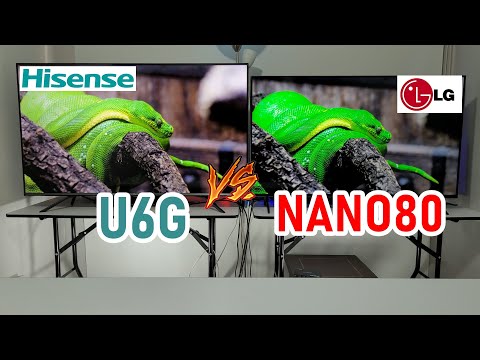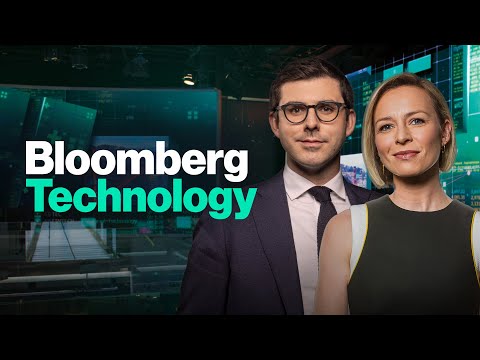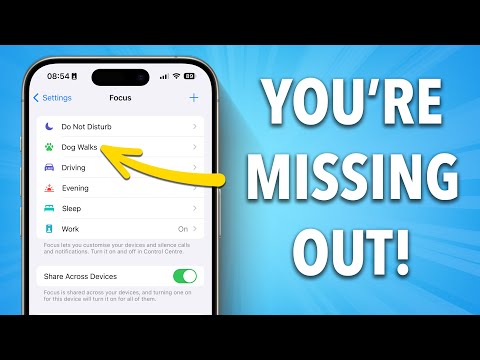HISENSE U6G vs LG NANO80: Smart TVs 4K con Panel VA / Ninguno tiene puertos HDMI 2.1

Hisense U6G with Quantum Dots color technology in this 55-inch case with a VA panel which has full array backlighting with local dimming versus the LG NANO80 in this 50-inch case that also has a VA panel but its backlighting technology is LED Edge and It also has local dimming. You should keep in mind that all sizes of the Hisense U6G have a VA panel, but in the case of the LG NANO80 , at least here in Colombia, only three sizes are sold, this 50-inch one that has a VA panel, but the 55-inch and the 65 inches come with an ADS panel , however, the performance in dark scenes of both televisions is good considering that they are not high-end televisions, both have local dimming, however, thanks to the fact that the Hisense U6G has a full array, that is, with more LED bulbs When the screen is backlit, the blooming effect is less noticeable, while in the case of the NANO80, as you will be able to see, a blooming effect can be perceived. g in the form of wide vertical bands with a slightly whitish tone that can be annoying in some scenes and this happens because its backlight technology is Edge LED, that is, it is not full array and what the Edge LED indicates is that the backlight only comes from the edges of the screen for that reason that noticeable blooming effect is generated and it may be annoying in some scenes while in the Hisense U6G some blooming is also noticeable but it is less annoying however right now I am going to show you the results on both televisions completely deactivating the local dimming you will be able to observe that in the Hisense U6G when deactivating it you will notice an excessively annoying clouding effect while in the NANO80, despite the fact that some clouding is also noticeable, it is less noticeable and this is mainly due to the fact that it has a lower amount of brightness so on the Hisense U6G I recommend always in every picture mode to keep the local dimming on a high or at least medium depending on the results you notice while in the NANO80 I always recommend keeping the local dimming off because in any case it does not have a bad contrast ratio natively it has 4,294:1 and with the local dimming 5,309 :1 this with the cinema mode while the Hisense U6G also with the cinema mode natively 4,749:1 and with the local dimming 5,234:1 remember that the color technology of the Hisense U6G is Quantum Dots while that of the LG NANO80 is NanoCell the color representation of both televisions is good but in most scenes I like the work of the Hisense U6G a little better without detracting from the work of the NANO80 because in fact in other scenes or with some image modes I like the work a little more accentuation of the colors of the NANO80 because it seems to me that it generates better results between the light parts and the dark parts but that is simply my personal perception I do not discredit the work of the Hi sense U6G because it also seems very, very good to me and in terms of brightness amounts the Hisense U6G reaches 493 nits in both standard dynamic range and high dynamic range while the NANO80 in standard dynamic range reaches 292 nits and high dynamic range 296 nits and in terms of high dynamic range technologies, the Hisense U6G is more complete, it supports HDR10 HLG HDR10+ Dolby Vision and also Dolby Vision for gaming while the NANO80 only supports HDR10 HLG and something that LG calls HDR10 pro but does not support Dolby Vision nor Dolby Vision for gaming for these results in terms of image scaling I am using the cinema image mode on both televisions here I can say that I liked the work of the NANO80 a little more with very low resolution content because it is less noticeable pixelated parts , however, it is probably due to the fact that it is 5 inches smaller, I am not 100% sure, although I do not want to discredit the work of the Hisense U6G because it also It also seems good to me, just keep in mind that no current 4K television is going to show content in 4K when the resolution of the content is very low, but from 1080p onwards, the image scaling work on both televisions is much better, in fact the content seems to be It had a little more resolution but even so it will not be able to show in 4K and from 1440p there it is and the image scaling work on both televisions is very good, in fact there the content is very similar to a Native 4k and of course both can play native 4k content in both standard dynamic range and high dynamic range without problems just remember that you must have a very good internet download speed in your homes if you want to watch high resolution content late streaming applications such as Netflix YouTube Amazon prime among others or otherwise these applications would automatically reduce the resolution of that content to be able to improve For its fluidity in terms of the gaming section, here I want to show you what I have always told you in other videos where I show this Hisense U6G and that is that when I play video games with high dynamic range I don't know why it doesn't show me a game mode as such, however with the possible image modes it seems to me that the input lag time is also very good , at least in practice and at least for a gamer who is not demanding according to rtings.com in hdr without the game mode it could be around 40 milliseconds and with the game mode 10.9 milliseconds while in the case of the LG NANO80 it does count as such with a game mode with this game bar its input lag time I do not know but it is probably around between 10 and 11 milliseconds approximately with this game bar can access different game genres and with each choice the graphic settings change a bit and you can also access the black stabilizer and white stabilizer to further improve the graphic quality In this gaming section, what you should keep in mind is that none of these televisions support hdmi 2.1 ports, that is to say that none of them will support 120 hertz in 4k or variable update rates, that is to say that they do not support Freesync or GSync Now, in terms of the graphic section, what you should keep in mind is that in some video games such as this Call of Duty Warzone or Gears 5 or others where in some parts there may be some shadow and darkness in the NANO80 in those parts tend to look slightly darker although it still seems to me that the details can be noticed very well but it is true that in the Hisense U6G details are more easily noticed in that type of parts and in terms of their response times according to rtings.com dotcom for the Hisense U6G is
11.6 milliseconds and also according to the same rtings.com page the 2020 NANO80 has a response time of 15.8 milliseconds this version The one that I have is from 2021 and they have probably improved it a little, perhaps 15 milliseconds or 14.5 milliseconds, but whatever it is in this gaming section, it seems to me that, like the Hisense U6G, it generates very good results in terms of movement management without However, the handling of movement when viewing content through native television applications such as YouTube Netflix among others in the NANO80 is better or in fact much better, the parameter known as Trumotion in each image mode allows very good results by decreasing the effect of vibration while in the case of the Hisense U6G the only thing that until now has to try to decrease that effect is the free movement of the LED but that darkens the image a lot and the results obtained are not so magnificent as to sacrifice that clarity until now that is the result of the Hisense U6G and I don't know if they will solve this later with a software update as it happened for example with In the Hisense H8G of 2020, then, remember until now the handling of movement when using applications and viewing this type of content with quick scenes or camera sweeps, the handling of movement is much superior in the NANO80 , the uniformity of gray colors of both televisions is very decent but it does look a bit better to me on the Hisense U6G because it shows less intensity of the dirty screen effect and the edges don't look as shadowy as they do on the NANO80 however when looking at content with more color it seems to me that both the effect of dirty screen like the slightly shadowed edges can go unnoticed in the NANO80 at least if you don't focus on that although it is a little more noticeable what they have to do with the shadowed edges especially on the right side of the screen although from my point of view, it does not seem to me to be something terrible , the main negative point of both televisions due to the fact that they have VA panels is that their viewing angles are not good, the co Flowers look whitish and lose a lot of volume when their screens are viewed from very wide angles but keep in mind that the performance in dark scenes of TVs with VA panels is much better compared to TVs with IPS ADS or PLS panels so keep in mind that the NANO80 55-inch and 65-inch have both ADS panels with greater intensity of the clouding effect reflection handling on both servers is very decent but it is a little better on the Hisense U6G mainly because it has a higher amount of brightness but they are more recommended televisions for dark rooms slightly recommended for rooms that receive artificial lighting and it seems to me that none of them is the best option for a room that receives a lot of natural lighting but in that case the Hisense U6G for what has already been mentioned in terms of brightness would be better heating in screen after almost two hours of using them non-stop also of course with video games on both televisions is relatively low , nothing exaggerated, however the temperature is a little higher on the Hisense U6G than in some parts of the screen, probably due to the fact that it has a higher amount of brightness , however in the NANO80 the temperature although in most of the screen is a little lower what is surprising is that the lower part of its screen is much higher although nothing exaggerated in any of them to feel too hot when approaching their screens in terms of inputs Hisense U6G has composite inputs account with two 3.5 mm inputs one for headphones and the other for example to connect a speaker it has an input of course for the LAN cable for internet it has 4 hdmi 2.0 ports but none of them support enhanced audio return channel it has a port for the optical digital cable two USB 2.0 ports and one port for the cable for the
air antenna while the NANO80 has neither composite inputs nor With 3.5 mm ports, what it does have is 4 HDMI 2.0 ports, one of them with support for enhanced audio return channel, two USB 2.0 ports, a port for the optical digital cable, a port for the air antenna and a LAN port. For the internet cable, in terms of the smart section, this is the design of its remote controls. Keep in mind
that in some countries the design of the Hisense U6G remote control changes, in the case of the NANO80 it is the Magic Remote, in both cases there is a button option for microphone to give voice commands to both televisions the operating system of the Hisense U6G is Android tv based on Android 9 and that of the NANO80 is WebOS this is the design of the main menu of both televisions and in terms of fluidity of their operating systems it seems to me which is very decent in both it is almost the same sometimes they open applications a little faster and load videos a little faster in the Hisense U6G and other times a little faster in the NANO80 but the difference between re both is very little of less than a second and in terms of voice assistants the Hisense U6G obviously supports the Google assistant I guess they can be paired through applications for example Amazon Alexa assistant the truth is I don't know I haven't tried while in the case of the NANO80 it supports, of course , LG's own voice assistant and also in Amazon Alexa and also Google assistant but at least here in Colombia I don't know why it doesn't support Google's voice assistant these are its application stores in the case of the Hisense U6G is obviously the Google Play Store and in the case of the NANO80 it is an application store of the WebOS operating system that also seems to me to be very extensive but in the Hisense U6G there is obviously the advantage that in addition to the fact that the store is larger, the TV can be installed apk files if necessary, while in the NANO80 this is not possible and the storage space in the Hisense U6G it is 11 gigabytes while in the case of the NANO80 it is approximately 2 gigabytes in both cases it seems to me that it may be more than enough for an average user both televisions support the screen sharing function but neither of them supports what is known as picture in picture neither multiview nor screen overlay and in terms of internet browsers in the case of the Hisense U6G there are several applications that can fulfill this function while in the NANO80 there is only one browser that is typical of the WebOS operating system that but which seems very functional to me and also thanks to the magic remote navigation will be much easier and it also has this option that is a kind of mini picture in picture although they cannot view two videos at the same time because when one of them is activated it stops or this function is deactivated as such, as you can see, you can also play multimedia content through different pages web browsers in the case of the Hisense U6G also in many browsers that he has and you will say that the Hisense U6G can be installed or synchronized external devices to function as a kind of mouse but you would have to buy those devices keeping this in mind while the NANO80 already includes the Magic Remote in terms of sound the power to both televisions is 20 watts in practice it seemed to me that the performance is very similar between both televisions I have no complaints about it whatever they choose in that sound section they will be very satisfied but in terms of technologies the difference is that the Hisense U6G supports Dolby Audio technologies without the need to connect a device compatible with these technologies to an hdmi port, that is to say that they also work when viewing content, for example through some application of the television while in the case of the NANO80 it is not possible at the end of this video in a few seconds you will be able to judge the performance Regarding its sound systems, many of you already know that I do not like the Android TV operating system and neither does Google TV. It is a very personal matter. I do not like its design, nor the location of its menus, nor its functionality as such. Also keep in mind that it is very important that these televisions with Android or with Google in them it is not possible to synchronize their remote controls with some cable TV decoder while in the operating systems of LG and Samsung WebOs and Tizen respectively it is possible that it can be a differential factor or maybe some people are disappointed when they get home and realize that keep that in mind for everything else the Hisense U6G is obviously better in terms of brightness in terms of colors in most scenes in terms of the system of sound that is also very good and for some people the fact of having Android tv can be an advantage I do not discredit the LG NANO80 the bad thing about the NANO80 in this case is that obviously it is smaller but its price is higher it is almost equal to that of the Hisense U6G approximately 600 dollars and obviously Hisense U6G is better in everything in terms of hardware and also here in Colombia it offers three years of warranty so as such with the NANO80 would be paying for a brand and also they are only offering a one year warranty so in summary the most intelligent option quality-price would be the Hisense U6G I don't know what you think about both televisions please let me know in the comment box if this You liked the video I invite you to please click the like button and also subscribe to my channel if you haven't yet, if you can, acquire a channel membership to access extra benefits and others that way you would support me and that they activate the notification bell so that they can know instantly each time that it is a new video, not being more, I say goodbye, see you in the next one and I invite you so that you can judge the sound system performance of both TVs
2022-06-17 22:35


